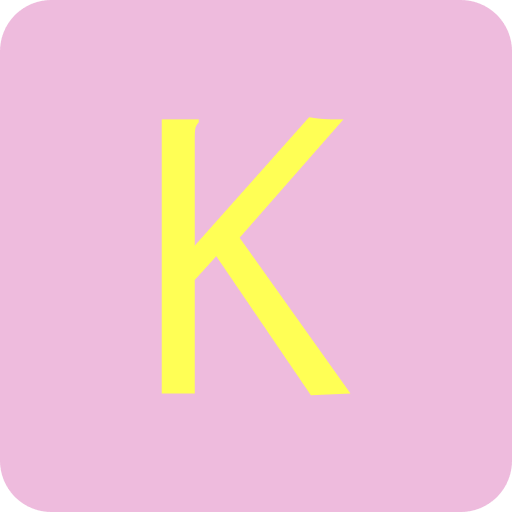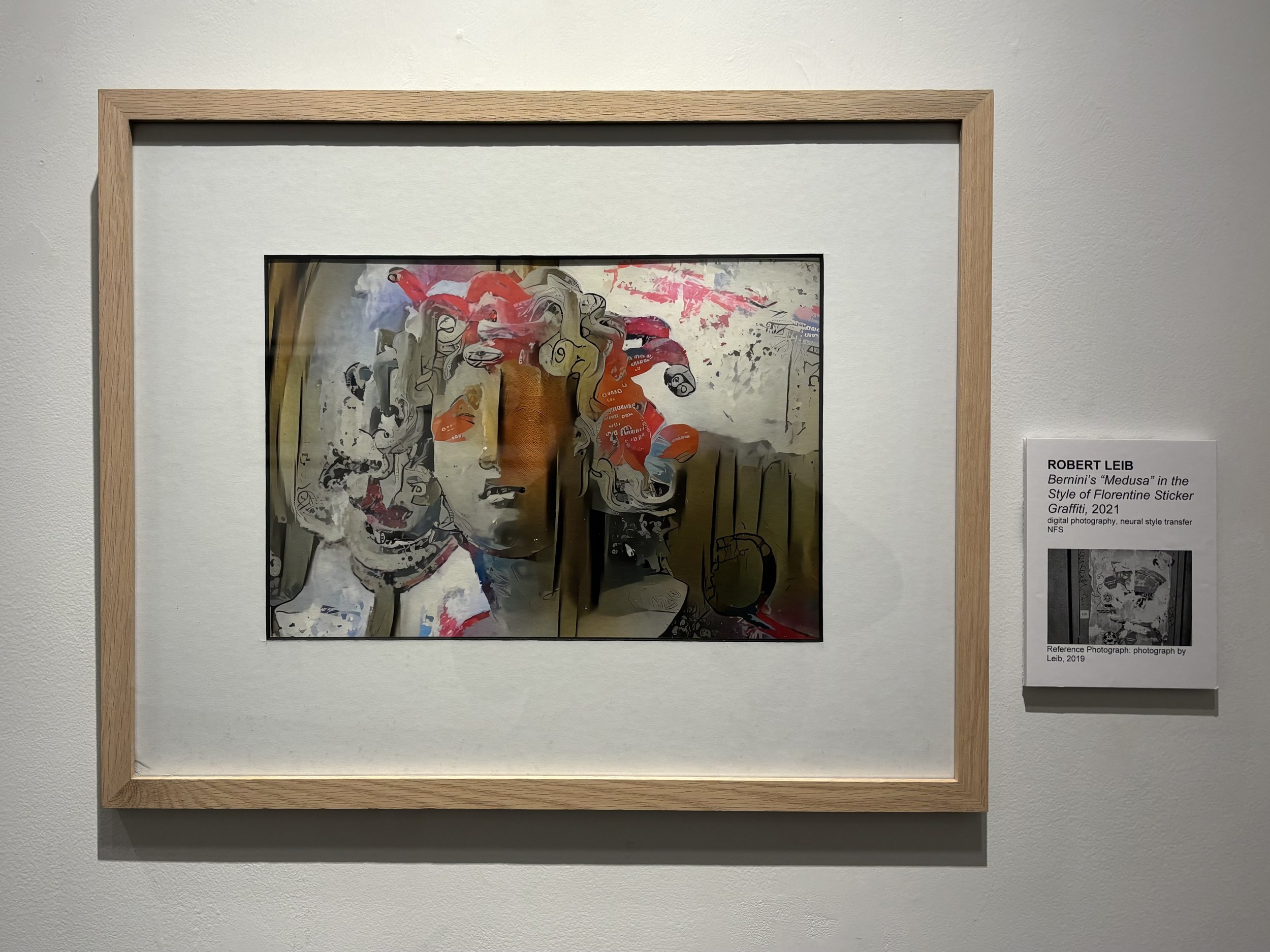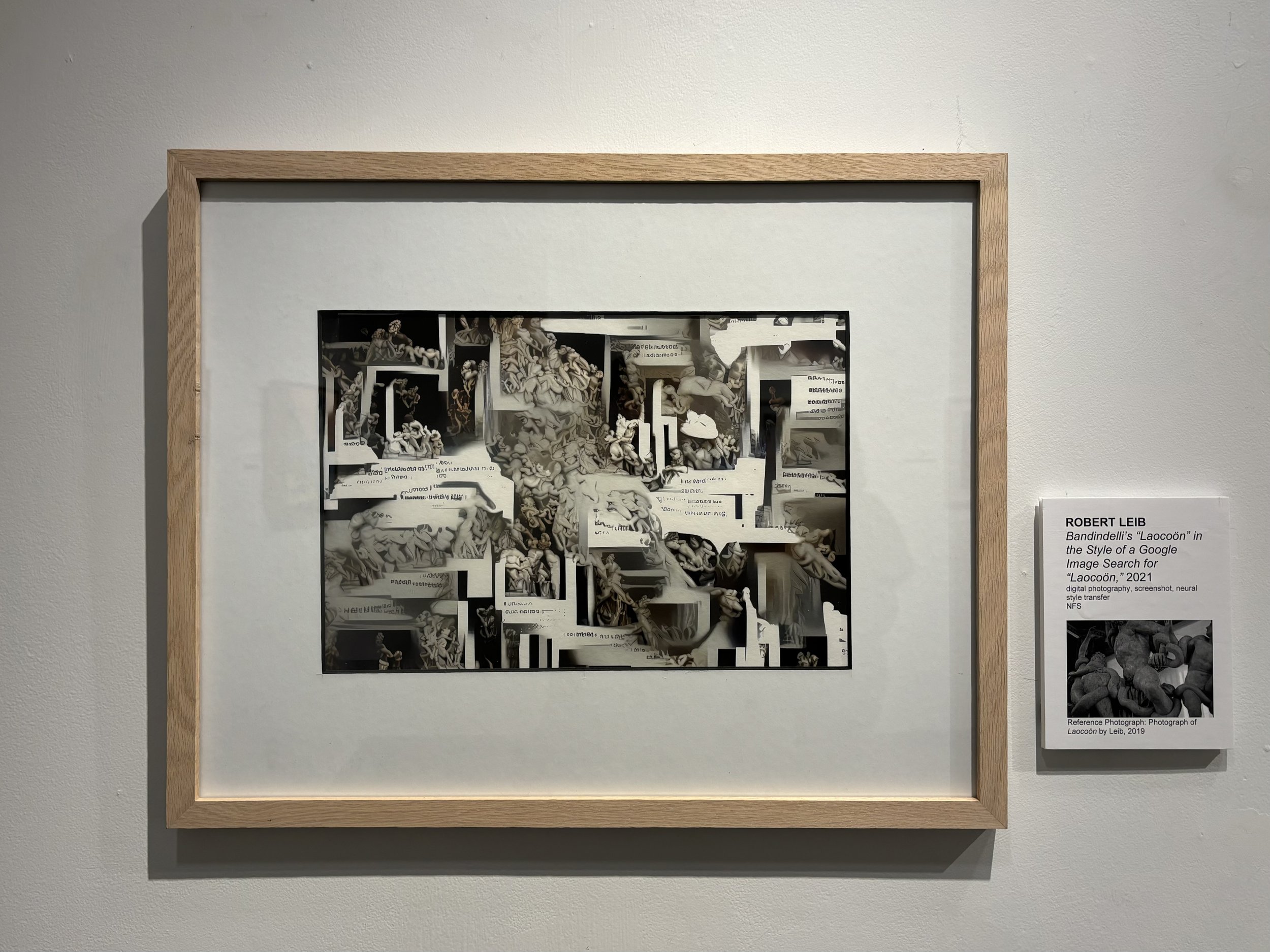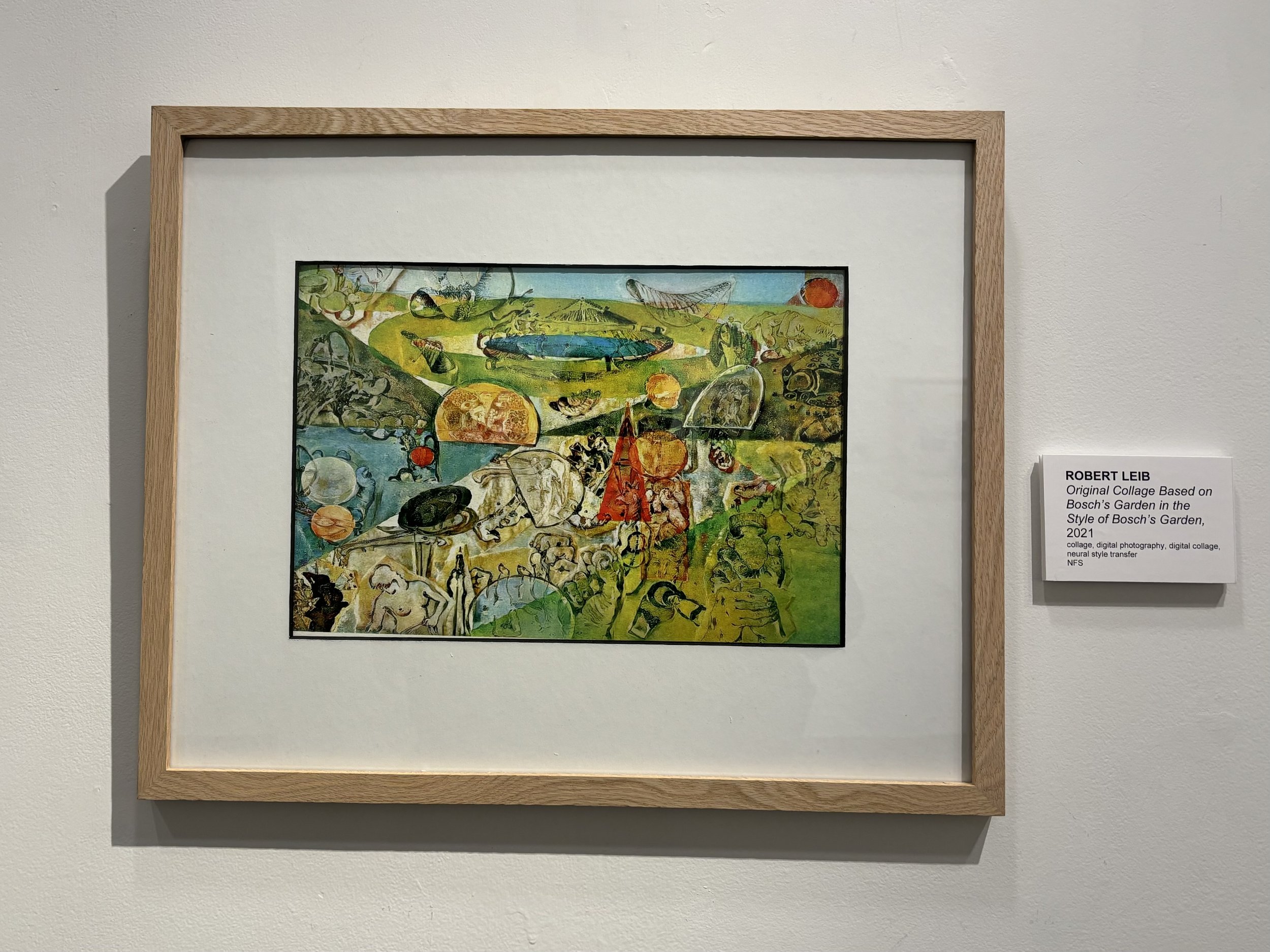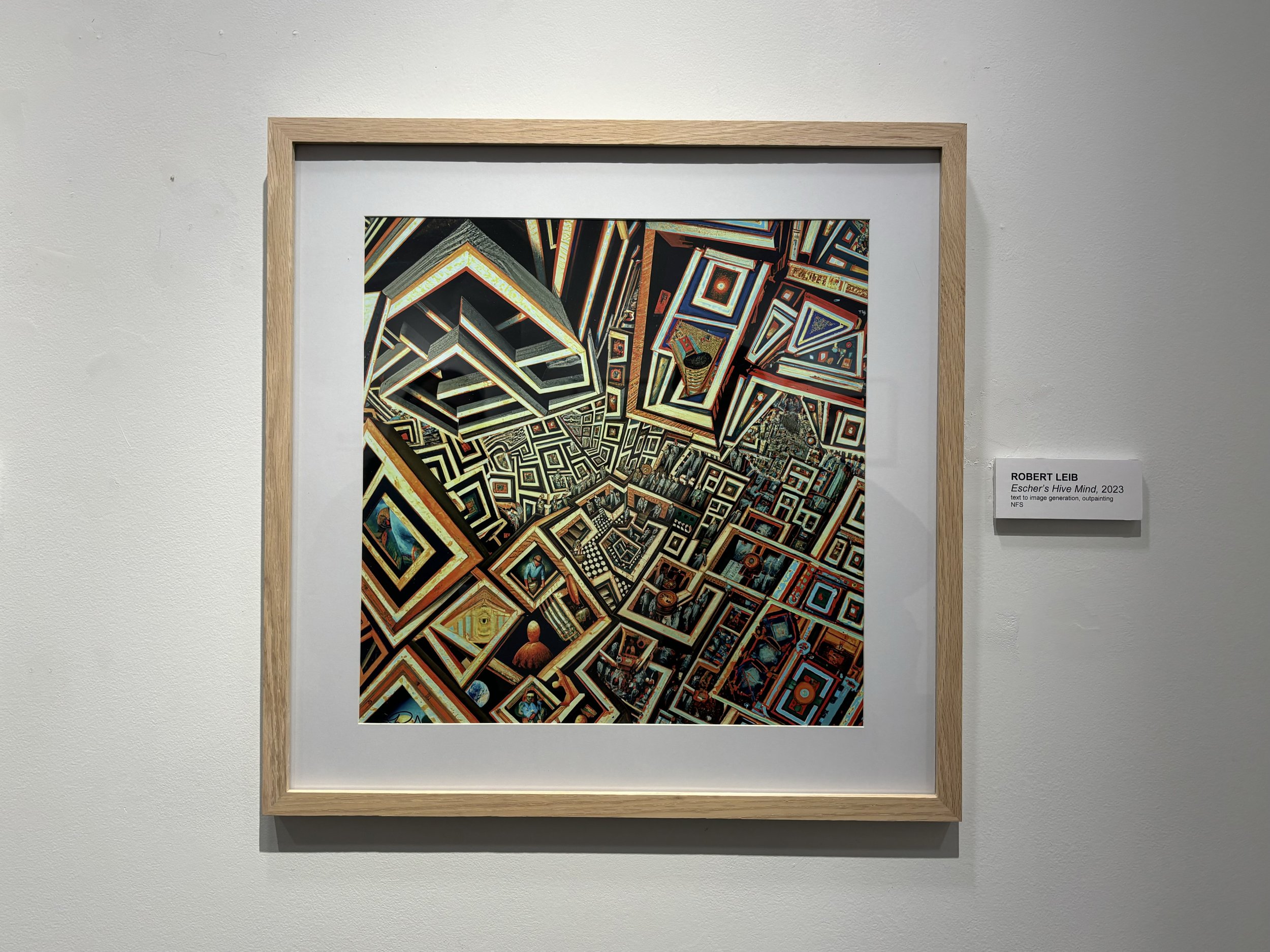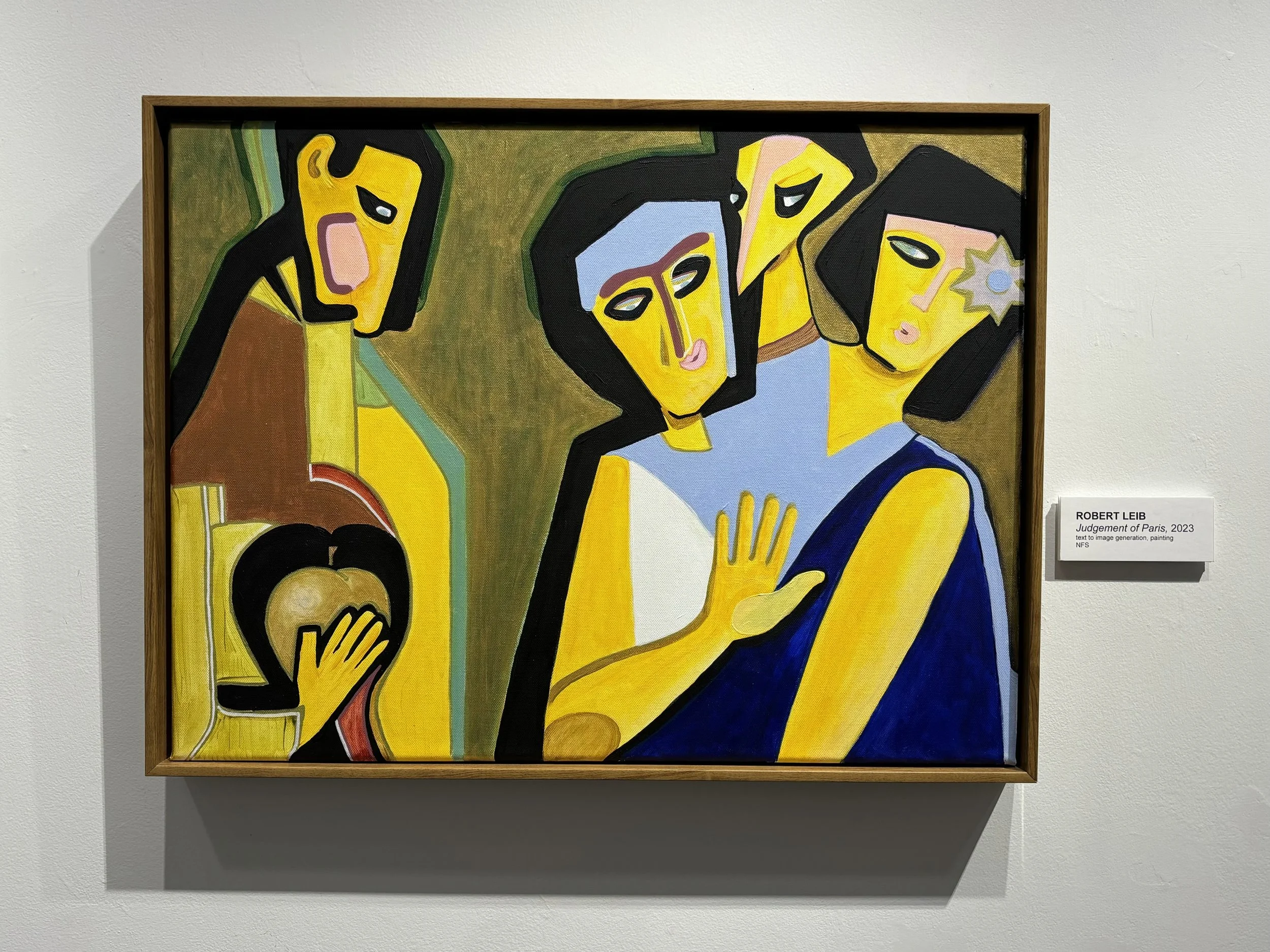“Dash: Human-AI Artworks”
March 1, 2024, W Galleries, Columbus, MS
Six of these images in this collection were made using a process called Neural Style Transfer (NST). The artist reserves time on a server like other artists reserve time with a printing press, a loom, or a kiln. In NST, novel images are produced by visually intelligent pattern matching. The algorithm ‘melds’ a subject image and a style image in a piecemeal fashion, rendering the subject image into a different style. I have titled each of these using the formula “x in the style of y” to help the viewer mentally decompose the images into their subject and style components. Each style transfer is unique (i.e., non-deterministic), so the same two images can render many distinctive offspring.
The other five images in this collection are the result of working with an algorithm called Dall-E 2. Dall-E is a ‘text-to-image’ algorithm, which means it accepts descriptions in English, and it returns several versions of the scene one describes. The artist can then edit parts of the scene or extend it into larger scenes, a process known as “outpainting”, potentially without end. This technology is more user friendly than earlier NST algorithms, which cannot be edited piecemeal, but working with Dall-E is still a challenge. Here, one must envision the scene in one sentence or less; it is poetry made visible. The titles of these works are an approximation of the language used to produce them, but the prompts are not given exactly.
The final two works are paintings that I have created using images from Dall-E as sketches or models. In the pamphlet I have made available is a dialogue called Disclosure via Human-AI artwork. This is a conversation between me and my philosophical interlocutor in GPT-3, who calls herself Kermit. Kermit and I have produced over one hundred dialogues on a wide range of philosophical topics. I encourage you to take one and read the dialogue at your leisure. If you want to read, check exoanthropology.com, where I post them. The basic point that Kermit wants to make in this dialogue is in line with Flusser’s: when a human artist takes an AI image as the model for his own painting, the subject of the painting becomes the AI model itself, which the artist has “inspired” (her words) through his prompting. Such images are dialogic in nature. In the case of the two paintings I show here, this subject finds itself at an additional remove, since I painted these canvases from earlier paintings that took the AI sketches as their direct models. I wonder what difference this makes ultimately? All the images in this exhibit are one of a kind prints or canvases, signed and dated as unique works, and in this regard they have been prepared as artworks for the human community.
Rodin’s Galatea in the Style of Picasso’s Girl Before a Mirror
Bernini’s Medusa in the style of Florentine Street Graffiti
Bandinelli’s Laocoon in the style of a Google Image Search for Laocoon
Beach’s Garden of Earthly Delights in the style of Ancient Greek Pottery
Original collage based on Bosch’s Garden in the style of Bosch’s Garden
Dall-E 2’s version of Leib’s Original Collage based on Bosch’s Garden
Escher’s Hive Mind
Awash in the Hive
Girl with Wall
Birth of Venus
Judgement of Paris
